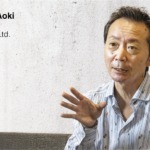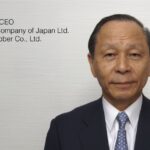GK had the pleasure of speaking to Fumitoshi Kawabata, the president of Asahi Kasei Homes Corporation. A renowned construction company and housing provider, famed for its ‘Hebel Haus’ line of prefabricated structures, Asahi Kasei is bringing its expertise to other markets, including the US and Australia.
Especially within Japan, space considerations play a huge part in the design process, with the average floor space of a home in Tokyo being a mere 65 meters squared. Alongside this, a rapidly aging population is leading to more and more homes housing several generations, an area your company has been researching via its ‘LONGLIFE’ imprint. From now until 2030, what do you believe are going to be the most important design considerations for homes built in Japan?
Houses in Japanese cities are often bounded by limited land space, meaning that three-generation houses need to be built in 2 and 3-storey formats. Issues such as sound insulation are especially important to ensure that children and older family members can live comfortably, as well as heat insulation during hot summers and cold winters. These properties are definitely becoming more popular as climate change takes effect.
Why do you believe the ‘Hebel Haus’ brand, and Asahi Kasei more widely, has maintained a strong reputation throughout its history?
I think that there are several aspects at play. Firstly, we gain customer satisfaction from the initial building of the house; providing a home that a family can love and enjoy. Secondly, being in a house and enjoying life there throughout a long time period can boost our reputation. We also offer after-care and maintenance services, as over several decades repairs might need to be made.
Also, family lifestyles can change, meaning that renovation or modifications to the house can be made to ensure that it always fits their needs and requirements. We have built long-term relationships with our customers as both a builder and manager, ensuring strong customer satisfaction.
To keep customer relations, we conduct regular checks at one-, two-, and five-year intervals, up to a period of sixty years in total, entirely complimentary. At these times, we check how satisfied they are with the house via questionnaires, which then feed back into our maintenance and construction operations.
In recent times, you have also made advancements in sustainability, as well as making inroads overseas via partnerships in Australia and the US, amongst others. As part of this strategy for the future, what is your plan for further internationalization?
The number one driver of growth for our business will be the overseas business, with target regions being the US and Australia due to their population growth and strong economies. We see these areas as the main potential growth areas for our business in the future. We have slightly different approaches in each area; in Australia we worked on M&A with local homebuilders, exchanging technology and information to improve efficiency. Most of eastern and southern Australia is covered by this network, and houses are built under a variety of brand names depending on the city or region.
When we considered entering this market, we looked at what is the most suitable approach and looked at other companies who followed a similar path. All countries have different cultural backgrounds, meaning that we have to adapt our approach from how we work in Japan. As such, we conduct M&A and create local partnerships; finding the right partner is certainly a big challenge. We have created good relationships with local companies to achieve this, especially with leaders who have similar mindsets regarding quality and value.
In the U.S., we are more of a subcontractor than a homebuilder. In this area, builders usually buy a plot of land, develop it, then sell the properties. As such, large-sized assets are needed, meaning higher risks than other areas. Working as a subcontractor, we can somewhat shield ourselves from land price risk, while maintaining a steady level of business growth. On-site building remains strong in the US, and there has not been much industrialization of the construction process as in the case of Japan. However, situations are changing, and as such we believe that there are areas where efficiency can be improved, giving companies such as us opportunities.









